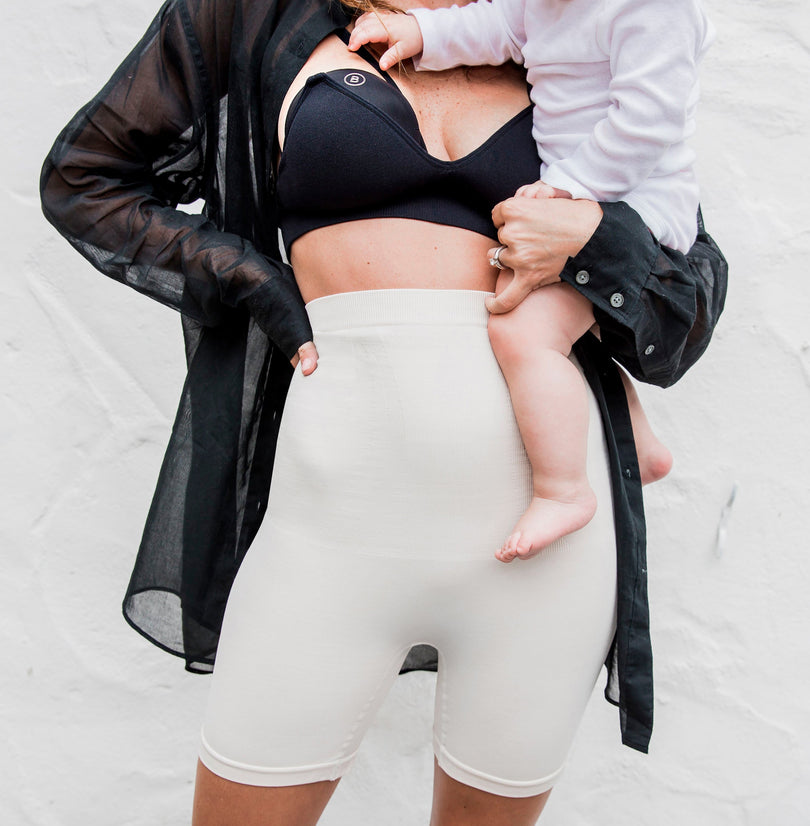 When you give birth via vaginal delivery rather than a C-section, you’re not undergoing major surgery but your body will still need several weeks to heal. In fact, you might have to limit your activities for at least 6 weeks after delivery unless your doctor tells you otherwise. As you adjust to caring for a newborn, make sure you’re also looking after yourself and giving your body a chance to recover.
When you give birth via vaginal delivery rather than a C-section, you’re not undergoing major surgery but your body will still need several weeks to heal. In fact, you might have to limit your activities for at least 6 weeks after delivery unless your doctor tells you otherwise. As you adjust to caring for a newborn, make sure you’re also looking after yourself and giving your body a chance to recover.
Let's talk about some ways to improve your postpartum recovery!
1. Ease pain and soreness.
You can expect to have soreness and possibly some swelling around your vagina after childbirth, whether you had a smooth delivery or a more challenging one. Applying ice to this area for about 10 minutes at a time can help reduce swelling and ease pain. You can also try taking over-the-counter pain relievers, such as ibuprofen, to reduce soreness. If you have pain from tears or if you had an episiotomy done, you can find relief by taking a Sitz bath a few times per day. A Sitz bath just means sitting in warm water to help ease pain. Your doctor might give you a plastic basin that fits over your toilet bowl for these baths, or you can make your own by filling the bathtub with a few inches of lukewarm water. In addition to easing soreness, Sitz baths can boost the healing process by keeping your vaginal area clean, which helps heal tears and incisions and lowers the risk of infections.2. Don’t overdo it.
You most likely won’t be feeling very energetic the first few days after a vaginal delivery, but your energy will return little by little as you rest. You’ll probably end up spending those days mainly in bed, which gives you time to rest and enjoy your new bundle of love. Once your energy starts returning, though, avoid doing too much. Your doctor might have you avoid using stairs or doing much walking around for the first few weeks after delivery, especially if you had any serious tears or other complications. Being careful with your activities during this time allows your body to heal, while doing too much can put too much strain on it and lead to excessive bleeding or other complications that will slow your recovery.
3. Know when to call your doctor.
Your postpartum recovery should go smoothly when you rest, limit your activities and keep your vaginal area clean, but complications can sometimes occur. Keep in mind that physical symptoms, such as vaginal bleeding, vaginal discharge and contractions are typically considered normal after having a vaginal delivery. It’s important to know when to get in touch with your doctor if something doesn’t seem right, so you can get prompt care if needed. Contact your doctor if you experience any of the following signs of possible postpartum complications:- Vaginal soreness that becomes intense
- Pus-like discharge coming from tears or episiotomy wounds, which can indicate an infection
- Heavy vaginal bleeding, especially if it’s accompanied by a foul odor
- Fever that is higher than 100.3 degrees
- Abdominal pain or tenderness, which could be signs of a uterine infection
- Symptoms of a urinary tract infection, such as a frequent urge to urinate, a burning sensation or urinating in small amounts
4. Don’t overlook your emotional well-being.
Recovering from a vaginal delivery affects you emotionally as well as physically. It’s normal to experience mood changes for at least the first few days after giving birth as your hormones fluctuate. If feelings of depression or mood swings don’t go away or if they become severe, don’t hesitate to reach out to your doctor. You could be experiencing postpartum depression (PPD), which affects about 1 in 10 women, according to the Centers for Disease Control and Prevention. This condition can be serious when left untreated. How do you know if you’re just feeling blue from being exhausted or if it’s PPD? Common symptoms of PPD include feelings of restlessness, irritability, a lack of energy, sadness and a loss of interest in activities you used to enjoy. You might also have trouble sleeping, have headaches or lose your appetite. Keep in mind that women with PPD might also have no interest in caring for their newborn, or they might worry excessively about their baby. Call your doctor immediately if you experience more serious signs of PPD, such as thoughts of hurting your baby.5. Eat plenty of fiber.
While eating healthy overall is an important part of recovery, including foods that are high in fiber is a good way to reduce your risk of constipation or hemorrhoids while your body heals. These conditions can occur after vaginal deliveries. Choose foods that are fortified with fiber, such as cereals, as well as foods that are naturally high in fiber, like beans, broccoli and apples. Make sure you also drink plenty of water! This can help prevent constipation and hemorrhoids as well as help maintain your milk supply.Alongside everything outlined above, we're believers our Highwaist Postpartum + Nursing Support Leggings will ease you back into daily life after baby arrives. They're flexible enough to expand over the "diaper" you're sent home from the hospital in, doesn't cause any restriction or discomfort as other clothing items can in those early postpartum days and they offer modest nursing sessions covering your tummy. Pair them with our Postpartum + Nursing Support Tanktops and you'll be feeling like yourself in no time.
Even better? You can double that attire getting back into the gym and resuming your regular activities.
#winning!





